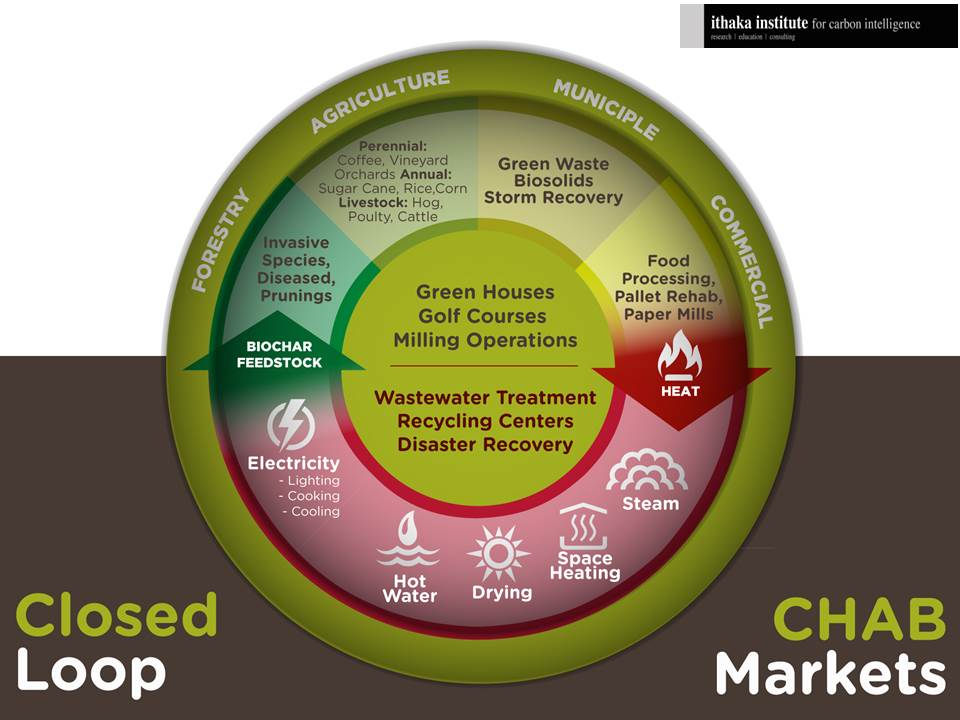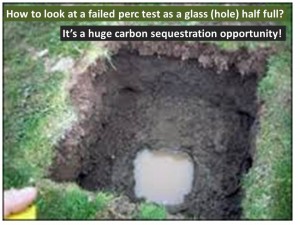
Yesterday I had the pleasure of presenting at the NE Biomass Conference in Portland, ME – which is simply a gorgeous place. [A major hat tip to all the good folks at ClearStak that are really helping to bring biochar to the attention of those within this industry!] My talk had two components: markets for biochar and markets for combined heat & biochar (CHAB) technology. Below is a modified version of the part where I discussed biochar markets.
The Biochar Markets graphic outlines current & potential biochar markets using 3 different attributes for each market segment:
- Volume of char that could be sold
- Value or potential price point that biochar could be sold within these markets
- Market Readiness – is it a current or future market for biochar
Agriculture has to-date garnered by far the most attention in terms of research and market focus. In part this is due to the multiple benefits associated with biochar such as improved plant yield and reduced fertilizer needs. But it is also partly due to the sheer volume of char that this market could represent. That said though, it is not without its challenges. Different soils and different crops respond differently to biochar making site specific recommendations for use and application techniques difficult. Low value crops that generate less than $1K per acre in revenues such as corn or soybean are unlikely candidates for biochar right now as the price point for char is simply too expensive for it to make economic sense. The best ag markets for biochar at the moment seem to be high value specialty crops (e.g. marijuana is a big one!) or in geographies that are suffering from droughts where biochar can improve water management.
I suspect another key ag market to keep an eye on might be crops grown in soils contaminated from a build-up of metals commonly found in pesticides or livestock manure or other sources. Crops such as rice or apples have been found to have significant issues with arsenic and cocoa beans have been found to have high amounts of lead and cadmium in some regions. Certain biochars can render these metals to be plant unavailable. So in these situations using biochar could mean the difference between being able to harvest and sell crops sown in tainted soils or having to let the land go fallow.
The gardener market has been one that many initial biochar producers seemed to target probably because char can be sold for much higher prices. Prices of $30 – $50 per 5 gallon, or $1 per pound are still common for this category although the market is getting much more competitive as biochar production capacity increases. The challenges in the market are at least twofold: low market awareness and a low potential for repeat sales. The latter is due to the fact that biochar tends to be a once and done kind of product. This obviously has a huge impact on customer acquisition costs.
The remediation market seems to be slowly gaining traction and I think could be a very interesting market. Where there is money for brownfield remediation biochar could be a lower cost alternative than some other options. In some demonstration plots biochar was left in situ and found to promote plant growth which leads to less erosion and less groundwater contamination. I’ve heard some murmurings about using biochar on fracking sites but I don’t have any specifics on that.
These three categories are all effectively single use markets – which is great for the consumer, but not so great for biochar producers. Most of the rest of the markets I will cover tend to be repeat markets, which is obviously critically important for sustained biochar production.
Filtration could be another very interesting market for biochar on many different levels. Activated carbon is often used for filtration and biochar can be designed to perform nearly as well as activated carbon and generally will cost a lot less. In addition biochar has a much lower carbon footprint than AC. Low cost filtration in the developing world is another big opportunity for biochar in everything from food processing to sewage treatment.
The use of biochar in livestock feed is one market that has been attracting a lot of interest especially over in Europe where a large percentage of the biochar being sold is for this purpose. Biochar acts as a binding agent in feed and has been shown to have multiple benefits to animal health as well as improved weight gain. Many large scale poultry and livestock operations use antibiotics and/or arsenic to stave off health issues but this has proven to be a public health issue and sustainable alternatives such as biochar are likely to be much more attractive moving forward. Reduced odors related to manure have also been documented. Initial research has also indicated that it could help reduce methane emissions related to cattle but this still needs more research to be fully validated. I recently heard that the first US biochar producer has received approval to market their biochar as a feed additive and I think we will see a lot more of this moving forward.
Biochar building materials has the potential to be a huge market within the next 5 – 10 years. Initial demonstrations of using biochar plaster in a wine cellar in Switzerland proved the concept had merit as it helped to significantly control humidity. Based on the positive results, the Ithaka headquarters was retrofitted with biochar plaster showing further benefits which included improved insulation, sound and odor reduction. Further testing has been going on to determine the best types of chars and the best recipes for mixing biochar with cement, lime and other additives to optimize different cement or plaster properties.
Biochar use in packaging materials is at the very beginning of development but could also prove to be a strong recurring market. Based on a small prototype of biochar made from coffee chaff and pulp we created what we’ve dubbed as ‘chardboard’. Chardboard may have an advantage over biodegradable packaging which is quickly gaining market share, in that it is actually ‘bioUPgradable’ meaning that even if sent to a landfill it can have positive impacts such as sorbing toxins and sequestering carbon as opposed to biodegrading and off-gassing methane.
The world of 3D printing materials is changing by the day. Filament materials are no longer limited to just plastics or metals, 3D printing materials include ceramics, paper, sugar, even seaweed! We’re (by this I mean the Ithaka Institute) convinced that biochar will be not only a viable material for 3D printers, but a very versatile and sustainable one moving forward.
Another fascinating area of research for biochar use is in microbial fuel cell technology. MFC is a renewable form of energy that leverages microorganisms to generate electricity while they degrade organic matter. The use of biochar has shown promise in this arena due to its chemical stability and good electrical conductivity. We are definitely a few years or more away from seeing this kind of thing commercialized but this could be an excellent recurring market for biochar.
For some carbon offsets represent the holy grail of biochar markets. However this is really a big unknown at this stage as markets for offsets are still tenuous, prices for offsets fluctuate like penny stocks and biochar has yet to gain approval as an offset product. But this could all change in the not too distant future as there are many folks working on getting biochar on the radar of various carbon markets.











